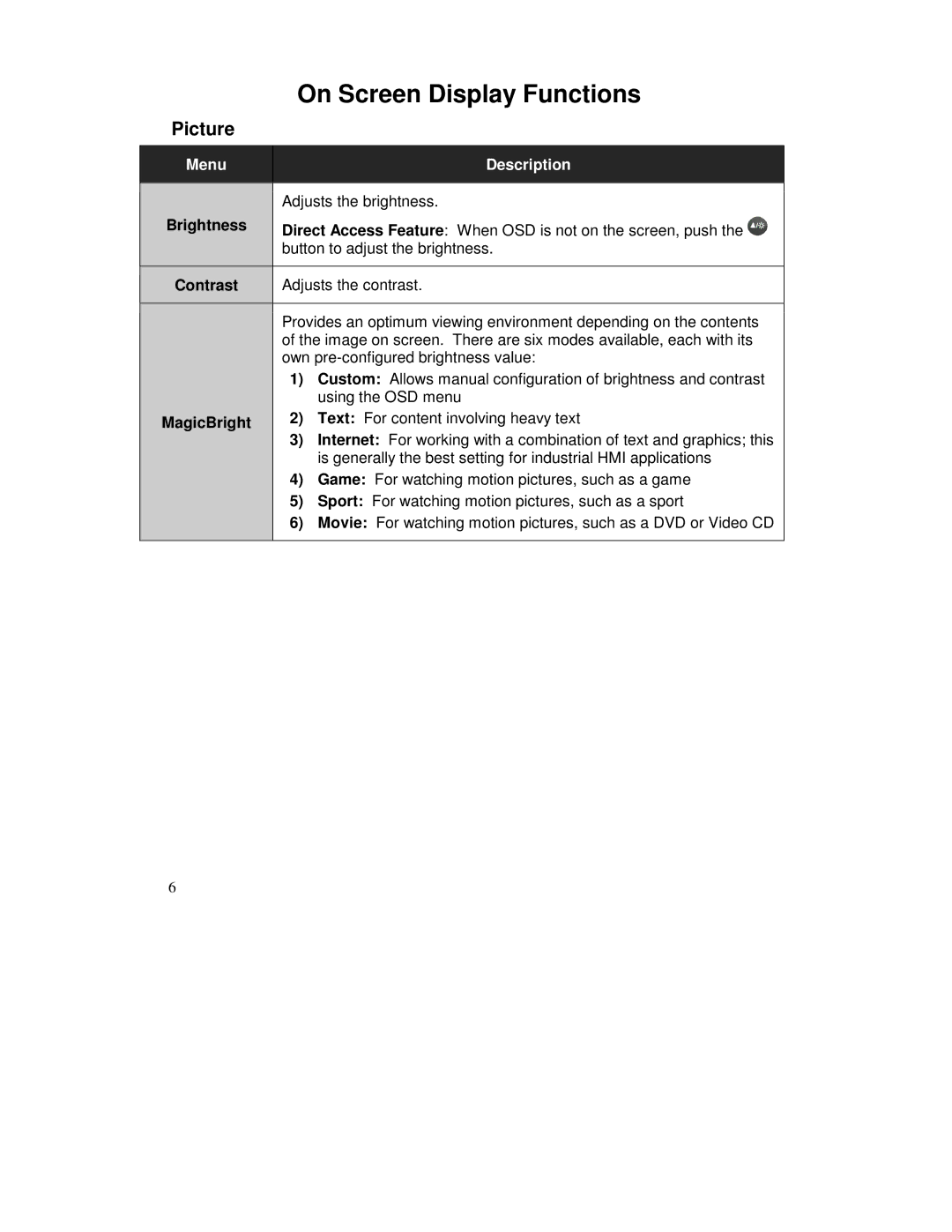
|
|
| On Screen Display Functions | |
| Picture |
|
| |
|
|
|
|
|
| Menu |
|
| Description |
|
|
|
|
|
|
|
| Adjusts the brightness. | |
| Brightness | Direct Access Feature: When OSD is not on the screen, push the | ||
|
|
| ||
|
|
| button to adjust the brightness. | |
|
|
| ||
| Contrast |
| Adjusts the contrast. | |
|
|
|
|
|
|
|
| Provides an optimum viewing environment depending on the contents | |
|
|
| of the image on screen. There are six modes available, each with its | |
|
|
| own | |
|
|
| 1) | Custom: Allows manual configuration of brightness and contrast |
|
|
|
| using the OSD menu |
| MagicBright |
| 2) | Text: For content involving heavy text |
|
|
|
| |
|
|
| 3) | Internet: For working with a combination of text and graphics; this |
|
|
|
| is generally the best setting for industrial HMI applications |
|
|
| 4) | Game: For watching motion pictures, such as a game |
|
|
| 5) | Sport: For watching motion pictures, such as a sport |
|
|
| 6) | Movie: For watching motion pictures, such as a DVD or Video CD |
|
|
|
|
|
6
